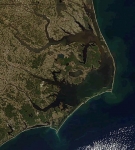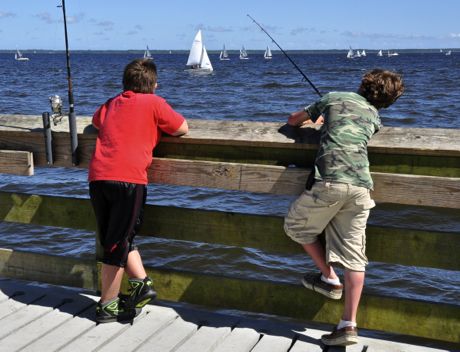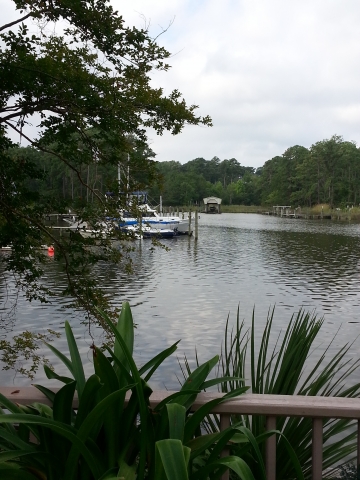I want waterfront property
“I want waterfront property” is a common phrase Realtors hear in Coastal Eastern North Carolina. Believe it or not, this can be a very complicated request. Waterfront, especially on the inner banks side of the coast line, can mean many different things. I have put together this information to help make your adventure in finding the perfect waterfront property a little easier.
Before you get started looking for waterfront properties, here are a few things to consider.
1) What kind of view do I really want?
2) The river and the sound may not be the place to dock your boat unless you can put it on a lift.
3) Are you buying waterfront to fit your boat or will you buy a boat to fit your waterfront?
4) Knowing that there is very little lunar tide on most inner banks waters, what depth do you really need?
5) What is your mast height and is there a bridge that may impede your access to the open water?
6) Would purchasing a boat slip at a marina better fit your budget and boating needs?
Let me roughly define the different bodies of water for you. Hopefully, by understanding what each offers, you will be able to refine the search to meet your needs thus saving a lot of time and energy.
Coastal NC Sounds: Sound front property is the closest thing to living on the ocean front without the ocean. North Carolina’s coast contains seven coastal sounds, all with varied sizes and depths of water.

The Currituck, Albemarle and Pamlico Sounds are separated from the Atlantic Ocean by a 200 mile long string of narrow barrier islands known as the Outer Banks. Albemarle Sound is the largest freshwater sound in the world and the Pamlico Sound is the largest sound on the east coast of the United States. The Pamlico Sound is considered a shallow body of water; it is 28 feet at its deepest, mixed with many sandy shoals and small islands. Its size ranges from 80 miles long and 30 miles wide at its broadest point. The wind-driven tides can be unpredictable and the water conditions seem to change on a moment’s notice. The sounds of North Carolina are the nursery for much of the seafood and wildlife for Eastern United States. The sounds are fed by a multitude of streams, creeks and rivers from the west with navigable inlets to the Atlantic Ocean to the east. The Intracoastal Waterway (ICW) runs through many of the connecting sounds allowing for protected travel from Maine to Florida.
Rivers: The Rivers and streams flow from the western regions of North Carolina. Where they begin to reach the flat coastal plain they slow and widen as they merge with the waters of the sounds.

The Neuse River is the longest river in North Carolina and the widest river in America. Six miles across at its mouth at the Pamlico Sound, this river is known for its breathtaking views, outstanding fishing (both recreational and commercial), and the abundance of wildlife. It is an integral part of the second largest estuarine system in the US. The boating, whether it is cruising or sailing, kite-surfing or kayaking is without compare.

The ICW runs along its waters, making a turn south across from Oriental, NC as it makes its way towards the Bogue Sound and the inlets to the Atlantic Ocean.
Creeks: The thousands of miles of creeks in Eastern North Carolina are surprising to many people when they first visit. Often mistaken for rivers, it is not unusual for creeks to span a half of mile at the mouth with depths of 7 feet. Creeks are protected from the ever-changing conditions of the rivers and sounds. Many of the creeks range from freshwater at the head to brackish water as they near the sounds and rivers, allowing for a diverse population of wildlife and marine fisheries. It’s in these protected waters where you will often find docks and marinas.

Canal front: You’ll find in Eastern North Carolina a scattering of man-made canals running throughout many towns and villages linking interior land with the creeks and rivers. Often, these canals are deep and navigable waters, usually lined with docks and boats of all kinds. They allow for deep-water, protected dockage just steps from your back door. They are often called hurricane holes, as is the one shown below.

Guts and other “dockable” waterfront: Sometimes it is not all in the name; see a photo of Hogs Pen Gut below.

There are shallow basins that branch off the coastal creeks called guts. These waters can be beautiful and protected areas with sometimes 3 to 4 feet of water depth. Many of the marshes have a stream running through and are perfect for launching kayaks and docking small boats. Combined with the pristine views and wildlife, these are often private hideaway home sites.
Some folks would have you believe that waterfront is anything that you can’t jump across flat-footed without getting your feet wet. Don’t let them fool you; deep ditches and puddles are not considered waterfront.
Come to Mariner Realty to let our experts help you find your perfect waterfront property.
